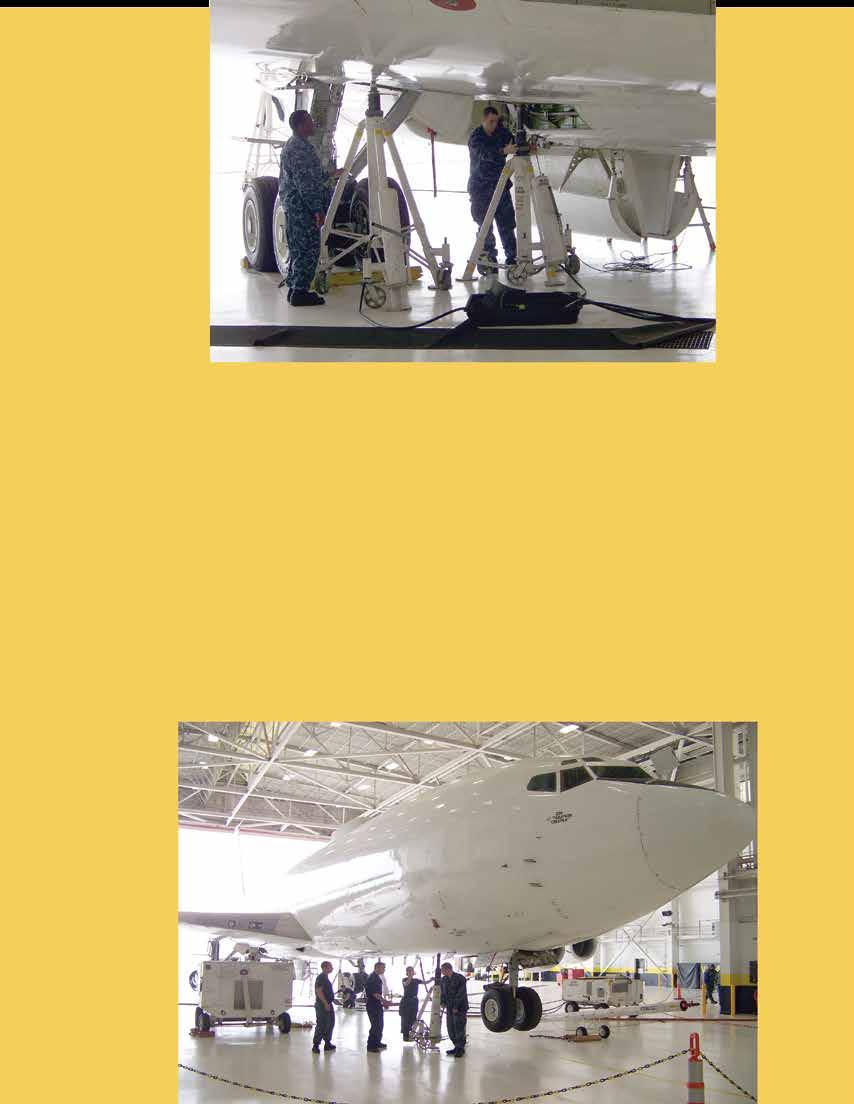
3 minute read
All Jacked Up
By AM2 Joshua Herring and AM3 Sean Edwardson
We were sitting in the Airframes shop during a Monday night midcheck when a task blared out of the 1MC. “Airframes!” yelled our Maintenance Control Chief, “we need to perform op checks on aircraft 407’s brake system!” This job called for a routine jacking operation on an E-6B Mercury, which weighs 342,000 pounds.
A flight engineer completed a Form F (aircraft weight & balance) to ensure the aircraft was at a proper jacking weight of 240,000 pounds (as called for by the E-6B technical manual). After we checked the pubs, we did pre-op checks on the support equipment. Once the hangar bay was prepared for jacking, we briefed the task in Maintenance Control. Everything seemed to be in place.
A team of highly qualified personnel went to work. When we started jacking the aircraft, the starboard side came up more quickly than the port side. The operators of the mule (hydraulic pumping unit) and the plumb bob (a pendulum that attaches to the aircraft to indicate its equilibrium) rapidly communicated this unusual situation and halted work.
The mule operator began to counter the unbalanced aircraft by trying to raise the port side jacks to match the starboard side. When the mule operator turned the valve to raise the port side, the port side unexpectedly dropped two inches. This drop caused the port wingtip to be approximately two feet lower than the starboard!
Since the aircraft was in an unusual, asymmetric situation, the mule operator’s attempt to level the aircraft made things worse. The plumb bob and mule operators noticed the unsafe situation and told the team to lock down all jack collars to prevent any further movement of the aircraft. We still had one big problem: our aircraft was sitting sideways and looking like a low rider doing the three-wheel motion!
The team continued using ORM, assessing the situation, identifying hazards, making risk decisions, implementing controls and supervising the evolution. The hazard was obvious: the aircraft could slip off the jacks, damaging the aircraft and possibly injuring someone, resulting in a Class A mishap.
The first step in mitigating the hazard was to lower the aircraft back onto the ground. Our controls were to lock down the jack collars, and with the aircraft safely secured in the jacked position, we got more personnel
involved. We brought in two Quality Assurance representatives to assist and supervise.
We assessed that the aircraft could be lowered safely using the mule, but not jacked, so we used normal aircraft lowering procedures. With the aircraft safely on the deck, the team began to identify what went wrong.
The mule had been the culprit. It provides hydraulic fluid under pressure to the jacks via three different hoses (forward, port and starboard). It couldn’t provide the proper pressure to the port side. After getting a new mule, we triple-checked the hoses and connections and did pre-op checks on the jacks again. The team re-briefed the jacking operation in Maintenance Control and went back to work.
The aircraft was jacked, the brake system was op checked and the aircraft was lowered with no damage to personnel or equipment. This evolution could have turned into a mishap at the blink of an eye, but with experience, knowledge and team work, the unsafe asymmetric situation was averted and the maintenance evolution was performed without a mishap. The aircraft was returned to fully mission capable status and was able to make the Tuesday flight schedule.

AM2 Joshua Herring and AM3 Sean Edwardson work in VA-4 Airframes










